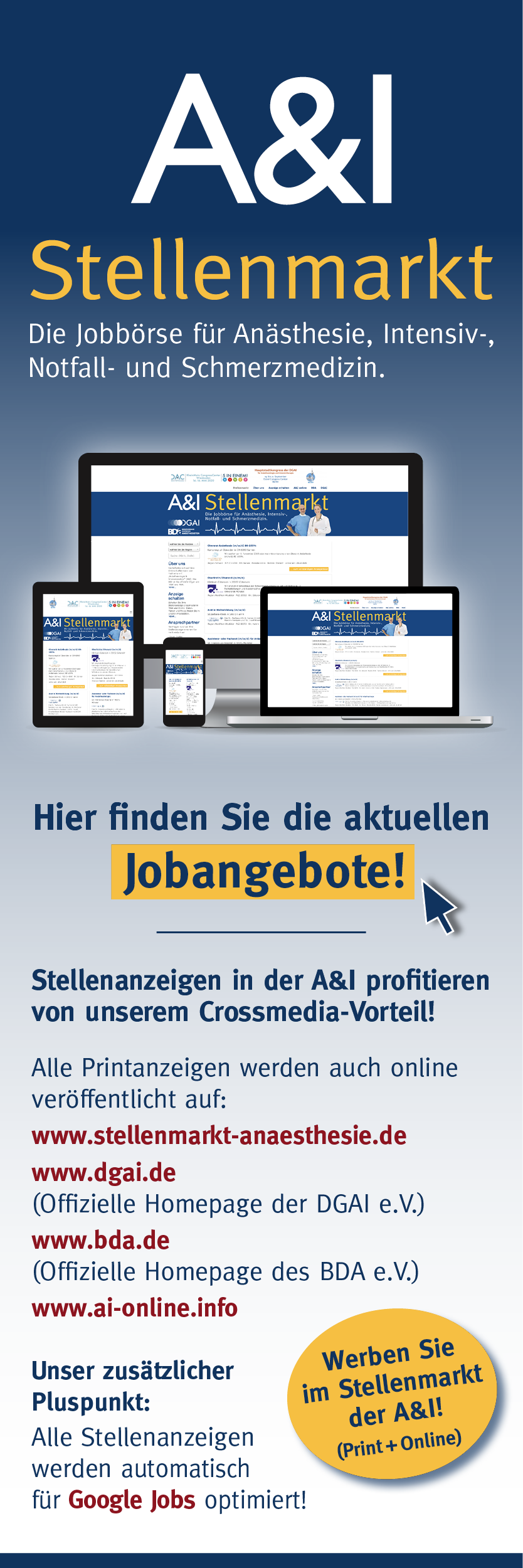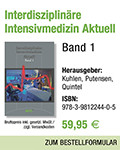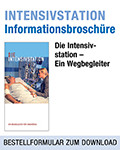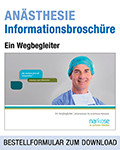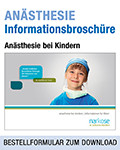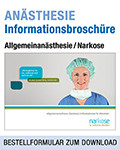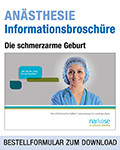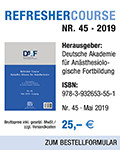
52. Jahrgang - Mai 2011
Anästhesie in der Thoraxchirurgie – Teil II:
Anaesthesia for thoracic surgery – Part II: One-lung ventilation and postoperative care
Veränderungen der Atemfunktion bei thoraxchirurgischen Eingriffen basieren zunächst auf Störungen des Gasaustauschs, wie sie bei jeder Narkose auftreten. Sie sind charakterisiert durch ein V/Q-Missverhältnis, eine FRC-Reduktion, Atelektasenbildung und veränderte Atemmechanik.
Beim Thoraxeingriff werden sie durch Seitenlagerung, Thoraxeröffnung, Einlungenventilation (ELV) und das chirurgische Vorgehen sowie die Begleiterkrankungen moduliert und verstärkt. Die ELV führt zu veränderter Ventilation der beatmeten Lunge, pul‑ monalem Rechts-Links-Shunt und Zu‑ nahme des pulmonalvaskulären Wider-stands. Die mit der ELV verbundene hypoxisch-pulmonale Vasokonstriktion unterliegt zahlreichen Einflüssen; Effekte auf die Oxygenierung sind im Einzelfall nicht konkret vorhersehbar. Die schonende Beatmung der ventilierten Lunge mit PEEP bei Anwendung von CPAP auf der nicht ventilierten Seite sichert regelmäßig die Oxygenierung mit einer FiO2 <0,8. Die postoperative Versorgung dient neben Überwachung des Patienten der Schmerzbehandlung, der Mobilisation und der Behandlung möglicher Komplikationen. Die systemische und regionale Schmerztherapie inklusive der TEA trägt zur Vermeidung von Komplikationen und zur Sicherung des Operationserfolgs bei. Unter den wichtigsten postoperativen Komplikationen ist neben Atelektase, Pneumonie, Rhythmusstörungen und myokardialer Ischämie sowie Blutung, Fistel und intrathorakalen Kompressionssyndromen insbesondere die akute pulmonale Insuffizienz hervorzuheben.




